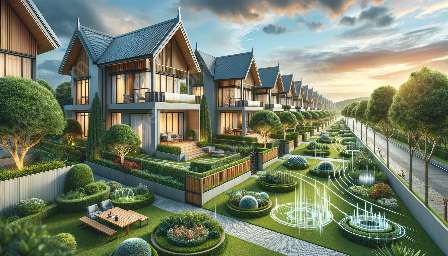Noise pollution has been a concern throughout history, affecting the quality of life in residential areas. This article explores the historical evolution of noise control regulations in residential areas and their impact on creating peaceful living environments.
Early Regulations:
In ancient civilizations, local authorities enforced restrictions on noisy activities to maintain peaceful residential areas. For example, the Ancient Romans had laws limiting the noise levels produced by various activities within the city limits. These early regulations aimed to create a sense of tranquility and order in residential spaces.
Industrial Revolution and Urbanization:
The industrial revolution brought significant changes to residential areas, with the growth of cities and increased noise from industrial activities. As a result, governments began to introduce noise control regulations to address the impact of industrial noise on residential communities. The first noise control ordinances focused on zoning and separating industrial zones from residential areas to minimize noise disturbance.
By the 20th century, the rapid urbanization and expansion of transportation networks further intensified noise pollution in residential neighborhoods. This led to the development of more comprehensive noise control regulations to mitigate the impact of urban noise on residents' well-being.
Modern Legislation:
In the mid-20th century, the recognition of noise as a public health concern led to the implementation of modern noise control regulations. Governments at local, national, and international levels began enacting laws and standards to limit noise levels in residential areas. These regulations addressed various sources of noise, including construction activities, transportation, and neighborhood activities.
Modern noise control regulations for residential areas encompass a wide range of measures, including building codes, soundproofing requirements, and restrictions on noise-producing activities during specific hours. Additionally, environmental impact assessments and noise impact studies have become integral parts of urban development projects to ensure the creation of quieter and more livable residential environments.
Impact on Home Design and Construction:
Noise control regulations have significantly influenced the design and construction of homes. Building codes now include standards for sound insulation, double-glazed windows, and acoustical materials to reduce interior noise levels. Homeowners are increasingly seeking noise-friendly features to create peaceful living spaces, contributing to the demand for soundproofing solutions and noise-reducing technologies in residential construction and renovation.
Advancements in Noise Control Technologies:
The evolution of noise control regulations has driven advancements in noise reduction technologies for homes. Innovations such as sound-absorbing materials, noise-canceling devices, and smart home systems have emerged to address noise concerns within residential settings. These technologies offer homeowners effective solutions for controlling and reducing noise levels in their homes, aligning with the objectives of noise control regulations for residential areas.
Enforcement and Compliance:
Effective enforcement of noise control regulations is crucial to maintaining a harmonious residential environment. Local authorities and community organizations play key roles in monitoring compliance with noise regulations and addressing noise-related complaints. Public awareness campaigns and education initiatives further promote understanding and adherence to noise control measures in residential areas.
Future Directions:
The ongoing evolution of noise control regulations in residential areas is driven by advancements in urban planning, technology, and environmental awareness. Future developments may focus on innovative approaches to noise mitigation, such as urban green spaces, quiet infrastructure design, and integrated noise management strategies, aiming to create more sustainable and peaceful residential communities.
In conclusion, the historical evolution of noise control regulations in residential areas reflects society's efforts to mitigate the impact of noise pollution and create better living environments. Understanding the significance of noise control regulations for homes and the broader context of noise control in residential areas is essential for promoting well-being and quality of life in our communities.


